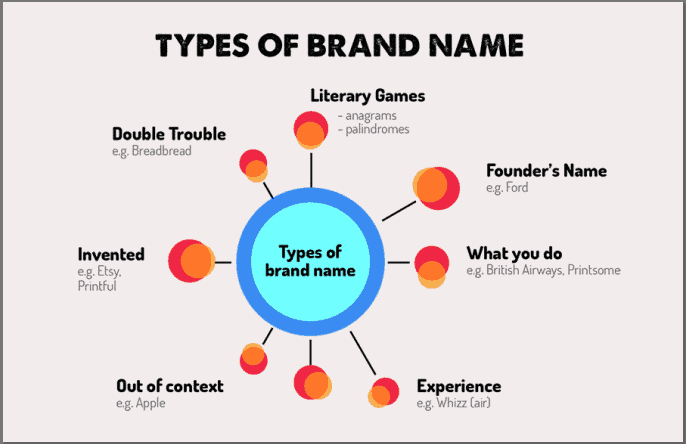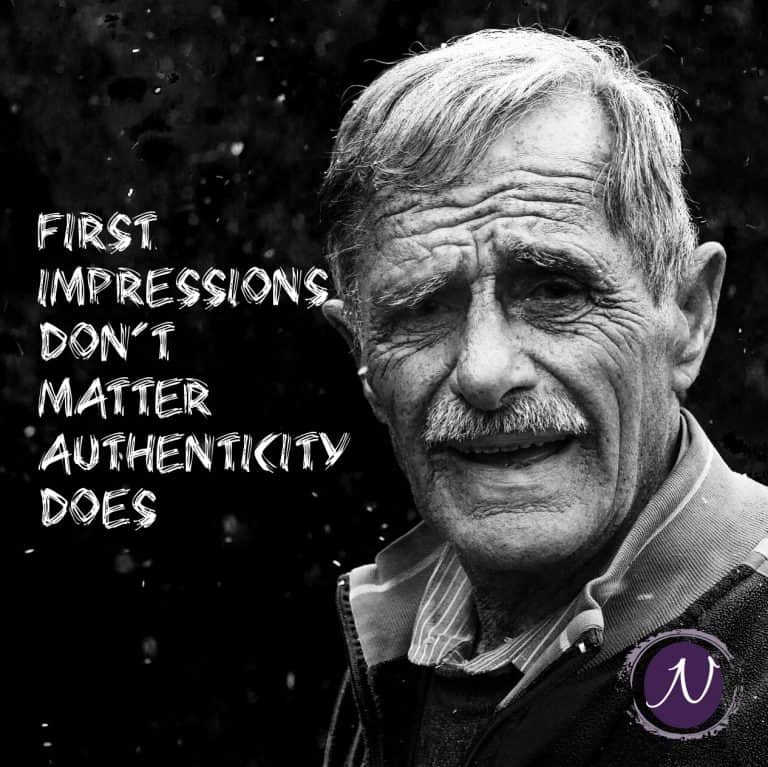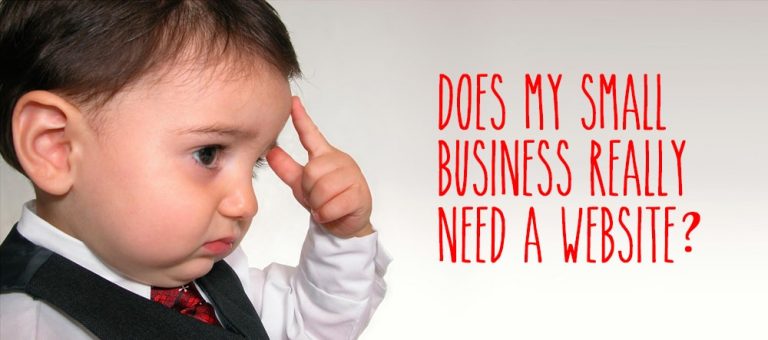Branding 101: Naming and Tagline
Have you ever wondered looking at bold fascinating signboards asking you to buy something or the other, and why they stand out? Have you noticed where your gaze rests on first? Yes, you guessed it right, the name of the business and the visuals. Whether it be BMW promoting its brand new sleek car design or Adidas flaunting their new sneakers, it all comes down to the authority of the brand names and the taglines which go with them. Your business name is the first thing that speaks to your audience – make it impressive.
Learning the ins and outs NOW, before choosing your brand name, will help you save time in the end. You’ll be able to have an informed decision with the name that you choose and decrease the chances of having to change it in the future.
Here are 5 tips to help you to do it the right way:
The Process of Choosing a Good Name
1. Discovery
When it comes to naming, the discovery process is vital. This is where you get all your proverbial cards on the table so that you can analyze the bulk of what your brand comprises. The naming process should (ideally) always follow a thorough brand strategy and positioning phase, so the appropriate amount of brand research and analysis is already in place.
Even if your brand has been recently positioned, however, there’s still plenty to consider during this primary step. What are the various opinions of key stakeholders regarding the renaming proposition? What are the prevailing concerns? What would be the mark of a successful name? What naming solution will best suit your brand architecture?
At this stage it’s imperative for key decision-makers to reach a consensus on what the objective criteria are for a new name. This will make things much smoother down the road, when it’s time to decide between a shortlist of names. You should have a clear checklist of attributes that you require of a name, so when a list of contenders is presented, the decision doesn’t boil down entirely to gut feeling.
One important thing to keep in mind when developing your criteria is that a great brand name doesn’t try to represent too much. It focuses on the communication of one central idea, instead of trying to be a catchall for everything the organization stands for.
2. Brainstorm
The brainstorming phase is where you gather the raw ideas that will serve as fodder for your name. Inspired by the core messaging and business objectives of your organization, and directed by the objective criteria you established in the discovery phase, brainstorming is a collaborative process among strategists.
“Directed” shouldn’t be misconstrued to mean “constrained,” however. This isn’t the time to let your imagination be hampered by what might seem to be out of bounds. Think unconventionally and take risks. The criteria defined during the discovery phase will be later used as a guide to determine whether or not an idea is sound.
The upshot of the brainstorming phase should be a list of unrefined concepts that can be honed or jettisoned in the refinement phase.
3. Refinement
Here’s where we get down to brass tacks. Whereas the result of the brainstorming phases is a collection of concepts, the refinement phase is where a list of actual possible names is generated. Your first list should be a long one. Using the ideas generated in the brainstorming phase, each name in your long list should at least generally fit the objective criteria established in the discovery phase.
Once a long list is created, the process of whittling begins, and the objective criteria become more instructive. When deliberating over whether a name should make the cut, it can be useful to put the name in hypothetical contextual situations. How is this name going to look on a business card? A website? How does it sound when said on its own, as well as when used in various sentences?
You can begin preliminary testing in this phase. If a name is on the bubble (or if it seems too good to be true), do a quick Google search to see what pops up. Things to watch out for include whether a company within your vertical already owns the name and whether the name is directly associated with any negative press or connotations.
The outcome of the refinement phase should be a “shortlist” of names—half a dozen or less—that are viable candidates insofar as they meet the predetermined objective criteria and don’t raise any immediate red flags.
4. Testing
Testing is the vetting process of each of the names on your short list. In the testing phase, we look at qualitative factors, like how marketable a name is, how it looks aesthetically, its relevance, what type of brand voice it embodies, and its ability to differentiate a brand from its competition. How a name will figure into your brand’s narrative is of great importance.
The less qualitative side of the testing phase is screening for legal viability and potential trademark issues. Trademark availability can be among the most challenging obstacles facing a brand name these days. The U.S. Patent and Trademark Office has a useful online search system that allows you see if a name is already trademarked.
Legally, a name has prove that it does not cause confusion among consumers when put up against other brands, and that it does not dilute the marketplace, by confiscating an existing brand’s equity.
Names should be reviewed and approved by intellectual property attorneys before any action is taken. The availability of URLs and social media channels should be assessed as well.
5. Selection and Launch
The final selection of a name can be a difficult proposition. But the above process is designed to make it as straightforward as possible, illuminating the relative value in each of the names on your shortlist. In the end, choosing a name does involve a bit of gut feeling. You should know intuitively which of your shortlisted names feels right, and best aligns with your brand personality.
To protect your brand from trademark infringement you’ll want to seek the help of an attorney. This is a process you can do on your own, but when dealing with the complexities of trademark law, it’s always best to have professional help on your side.
Once you’ve got consensus amongst decision-makers, it’s time to pull the trigger. The launch of a new name can be either terrifyingly uncertain or confidently thrilling. Taking the process one step at a time and making sure to lay the necessary groundwork make the latter a much more likely outcome.
Popular Types of Brand Names

1. Descriptive
Descriptive brand names are those that readily convey the service or product offered by a company. Because of this, they tend to be unremarkable. While functional and utilitarian, descriptive names leave little room for creativity on the part of the brand or interpretation on the part of its audience. Think Toys R Us, E*Trade, General Motors, or YouSendIt. The upside of descriptive names is that they clearly communicate the brand story. The potential downside is that they hamstring a brand as it grows and looks to diversify. Descriptive names are also very hard to trademark as by nature they rely on common words or phrases.
2. Evocative
Somewhere on the other end of the creative spectrum lie evocative brand names. Evocative names employ suggestion and metaphor to bring to mind the experience or positioning of a brand. They are singular and creative, and make for powerful differentiators. Because evocative names tend to be nonlinear and multidimensional, they represent an opportunity to forge a profoundly meaningful brand that is bigger than just the goods and services it offers. They’re often the cornerstone of a brand’s positioning. Powerful examples include Nike, Patagonia, Amazon, and Virgin. Because of their originality, evocative names are much easier to trademark than descriptive ones. It can, however, be challenging to get corporate buy-in on an abstract name that requires unpacking. Also, brands with evocative names had better be aligned, or they end up shooting themselves in the foot.
3. Invented
The best part about brand names is that if you can’t find the perfect word, you can always just make one up. Invented names are fanciful fabrications that are nothing if not distinctive. These types of names offer the most creative latitude for a brand, but that doesn’t mean they’re easy to dream up. Many are built from Latin, Greek, or other foreign root words and modified to best embody the brand personality. Exxon, Kodak, Xerox, and Verizon are all great examples of invented names that have managed to build monumental brand equity over the years. The challenge with invented brand names is that they have no inherent definition other than the one assigned them. While they’re a breeze to trademark, they can require a lots of time and hefty marketing spend to establish meaning in the eyes of customers.
4. Lexical
Lexical brand names rely on wordplay for their memorability. Puns, phrases, compound words, alliteration, onomatopoeia, intentional misspellings, and foreign words are all styles of this popular naming type. Lexical names are often clever—sometimes, arguably, too clever—and get their impact from pairing or modifying existing words for linguistic effect. Dunkin’ Donuts, Krazy Glue, Volare, and Sizzler Steakhouse are all examples of lexical brand names. The risk with these types of names is that they’re among the most shamelessly salesy of the bunch. Contemporary audiences have been exposed to decades of schlocky advertising techniques and aren’t likely to identify with clever wordplay unless it’s exceedingly subtle and creative. In branding, as in everyday life, there’s nothing worse than a pun that makes your eyes roll out of their sockets.
5. Acronym
Number 5 in our list is one of those naming types with straightforward, utilitarian purpose. Acronyms have been used for brand names since branding first crawled out of the primordial soup. Brands like IBM, AARP, BP, and UPS haven’t been hampered in the least by the fact that their names are nothing more than a series of unrelated uppercase letters. A startup these days would be hard pressed to come up with a great reason to name their company with an acronym, but as a rebranding strategy it’s worked well for brands like Aflac. KFC was able to weather the consumer backlash against trans fats so well that it’s now reverted back to the campy vintage identity of Kentucky Fried Chicken. As a rule, though, acronyms are hard for audiences to remember and even harder for attorneys to trademark.
6. Geographical
New York Life, Nantucket Nectars, Arizona Tile—sometimes brands are inextricably tied to the regions that birthed them. Geographical names imbue a brand with all the cultural and historical associations its namesake is known for—for better or worse. You’ll often find these names used by companies who once catered to a geographically limited audience but have since made it big. Naming or renaming your brand after its home region obviously has inherent limitations. And these types of names have almost all been used before. Put a city or a state name in front of a product or service and you’re almost certain to find an existing entity. California Tan? Already exists. Portland Automotive? Been done. Miami Subs? Yup.
7. Founder
Whether for reasons of heritage or hubris, there will always be brands named for the people who started them. This tradition stretches back to the earliest brands as well. There was a time when Fords tooled every street and Kellogg’s sat atop every breakfast table when there were few brands not named for their founders. These days, founder based names are less common, but brands like Ben & Jerry’s, Martha Stewart, Ralph Lauren, and Mrs. Fields have certainly made them work. Aside from sating the egos of their principals, founder names are definitely easy to trademark. They can be distinctive if positioned correctly, but require some marketing efforts to build equity (unless, of course, the founder is already famous).

The Mass Effect Of Taglines

Have you ever wondered what makes KFC’s “Finger Lickin Good” and McDonalds “I’m Lovin It’ so special? Every time you pair these taglines with their visual advertisements, they make you feel hungry and remind you of Colonel Sander’s golden crispy fried chicken or juicy McRoyales, so much so that you start singing their taglines. It all reflects on your sub-conscious memory which is constantly reminding you about the brand image because the tagline itself is so addictive.
What makes these taglines so effective? Well, multi-million-dollar marketing campaigns don’t hurt. But beyond the bells and whistles and media buys, there are a few reasons why all of these taglines worked. Every great tagline has the same three qualities:
- It’s sticky. Something about the tagline is particularly memorable and stays with the customer after he or she experiences it.
- It conveys value. Either directly or subtextually, the tagline connotes a key benefit offered by the brand or product.
- It differentiates. The tagline evokes the way in which the product or brand defines itself against its competitors.
While a little creative inspiration and unconventional thinking go a long way, the generation of a quality tagline is not magic. And, as with most creative endeavors, the better prepared you are going into the process the easier it becomes. Following this simple, five-step formula will put you in the best position to craft a tagline not soon to be forgotten.
Step 1: Learn

The discovery phase has an internal and external brand research component. For your internal discovery, you want to collect and review all assets relevant to the brand or product. At the highest level, you should be crystal clear on the brand or product’s positioning. It’s also useful to compile a list of all the key value propositions and differentiators associated with that positioning. For the external discovery, make a list of similar brands or products. Review the taglines of each to get a sense of the market landscape and identify opportunities for differentiation.
Step 2: Define

As with the naming process, establishing consensus around the qualifications, goals, and objectives of your tagline will make the selection process immeasurably easier. Sure, every tagline should be sticky, convey value, and differentiate, but what does that mean for this particular tagline? Is there a distinct benefit that the tagline must explicitly convey? Is there a voice or tone the tagline needs to advance? Are there word or character limits for the tagline? Getting all stakeholders to agree on a list of criteria that a successful tagline should meet will give you an objective metric by which to judge the relative success of your shortlist contenders.
Step 3: Brainstorm

If there is magic in the process, this is where it happens. But, as with luck, magic tends to shine on those who are prepared. In brainstorming ideas for your tagline, you should have handy the list of key value propositions and differentiators from Step 1. You also want to use your criteria from Step 2 as a source of inspiration, but you shouldn’t feel restricted by it. If you feel like the need to meet the criteria is hampering the creative process, take it off the whiteboard.
The most important thing to do when brainstorming tagline ideas is to embody the brand voice of the product or company in question. This is done by being intimately familiar with the messaging and positioning you collected in Step 1. Review the material in depth and repeatedly, until the brand personalitybecomes a natural extension of your writing. That’s the groove you’re trying to hit. From there it’s just a matter of having fun with ideas. Rhyme, alliteration, repetition, reversal, and double-entendre are each literary devices that have been shown to be effective in the creation of memorable taglines. But plenty of world-class taglines don’t draw on any of these tricks. Think about some of the taglines that have stuck with you over the years and use those as inspiration. Generate a long list of potential candidates and move on to Step 4.
Step 4: Refine

The refinement phase is where the criteria you defined in Step 2 come into play. Working through your long list of taglines from Step 3, determine which taglines meet the criteria, which do not, and which need a little help. The goal is to whittle your list down to a shortlist of three to five candidates. The more editorial eyes involved in this step, the better. Commission the help of colleagues, peers, and officemates from other departments. It’s always useful to get as many objective, third-party opinions as possible in making your decision. Once you have some consensus around the top candidates, take the time to work on the grammar, style, and cadence of each. Only after you’ve got a shortlist of candidates that have each been polished to their optimal state is it time to move to testing.
Step 5: Test

Similar to the naming process, testing taglines is the process of vetting each of the candidates on your shortlist against various performance metrics. By giving each of your tagline candidates a quantitative score in a range of different categories, you can see how they stack up against each other quantitatively. We look at factors like appearance, distinctiveness, depth, positioning, sound, and more. The comparative analysis can help you weigh the relative strengths of each of your shortlist candidates.
Also important is testing for trademark availability. Taglines are one of those things that can always be the target of legal challenges. The U.S. Patent and Trademark Office has a useful online search system that allows you to see if a tagline is already trademarked. Taglines should be reviewed and approved by intellectual property attorneys before they are launched.
Always remember – Story first, name and tagline later. A good story will help you create a name and tagline worthy of that story – something memorable and impactful.








Do you want to become a Canadian citizen and have a business?
https://arnikavisa.com/canada-investor-visa-learn-about-investment-immigration